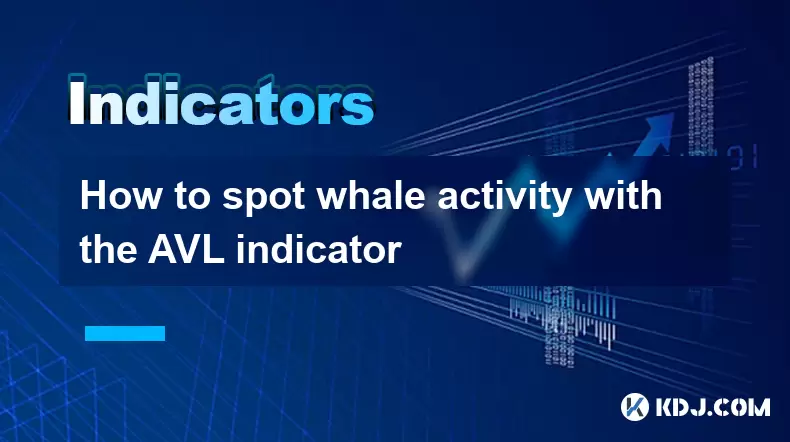-
 Bitcoin
Bitcoin $117,462.8204
-2.03% -
 Ethereum
Ethereum $3,061.1595
1.10% -
 XRP
XRP $2.9139
-2.19% -
 Tether USDt
Tether USDt $1.0002
0.02% -
 BNB
BNB $685.1357
-1.24% -
 Solana
Solana $161.3803
-2.11% -
 USDC
USDC $1.0002
0.04% -
 Dogecoin
Dogecoin $0.1948
-2.92% -
 TRON
TRON $0.2987
-0.89% -
 Cardano
Cardano $0.7330
-1.27% -
 Hyperliquid
Hyperliquid $47.7888
0.13% -
 Stellar
Stellar $0.4514
-2.93% -
 Sui
Sui $4.0169
2.74% -
 Chainlink
Chainlink $15.7088
-2.57% -
 Hedera
Hedera $0.2356
-3.33% -
 Bitcoin Cash
Bitcoin Cash $488.6656
-3.61% -
 Avalanche
Avalanche $21.2955
-1.47% -
 UNUS SED LEO
UNUS SED LEO $9.0415
0.42% -
 Shiba Inu
Shiba Inu $0.0...01332
-0.82% -
 Toncoin
Toncoin $3.0124
-0.62% -
 Litecoin
Litecoin $94.2175
-2.07% -
 Polkadot
Polkadot $4.0011
-0.61% -
 Monero
Monero $333.5714
-3.46% -
 Uniswap
Uniswap $9.1114
-1.56% -
 Dai
Dai $1.0000
0.02% -
 Ethena USDe
Ethena USDe $1.0005
0.00% -
 Bitget Token
Bitget Token $4.4951
1.87% -
 Pepe
Pepe $0.0...01242
0.47% -
 Aave
Aave $321.9943
0.51% -
 Bittensor
Bittensor $434.1984
5.13%
How to spot whale activity with the AVL indicator
The AVL indicator helps detect whale activity in crypto by analyzing accumulation, volume, and liquidity to spot hidden buying or selling pressure.
Jul 12, 2025 at 07:49 am

Understanding Whale Activity in Cryptocurrency
In the world of cryptocurrency, whale activity refers to large-scale transactions executed by entities that hold substantial amounts of digital assets. These whales can significantly influence market prices due to the volume of their trades. Detecting such movements early is crucial for retail traders who wish to avoid getting caught on the wrong side of a price swing or potentially ride the momentum created by these large players.
The AVL indicator, short for Accumulation, Volume, and Liquidity, is a technical analysis tool designed to highlight unusual trading behavior that may signal institutional or whale activity. Unlike traditional volume indicators, AVL incorporates multiple dimensions of market data to provide a more comprehensive view of buying and selling pressure.
AVL helps traders identify when large orders are being placed incrementally across exchanges.
This is particularly useful because whales often break down their trades into smaller chunks to avoid detection and prevent slippage.How the AVL Indicator Works
The AVL indicator operates on three core components: accumulation, volume, and liquidity. Each component contributes uniquely to detecting abnormal trading patterns.
- Accumulation: Tracks how aggressively buyers are entering the market over time.
- Volume: Measures the total amount of trading activity within a given period.
- Liquidity: Analyzes the ease with which large orders can be executed without drastically affecting price.
When combined, these elements create a visual representation of potential whale movement. For instance, a sudden spike in volume accompanied by increased accumulation but minimal price change could indicate a whale slowly building a position without drawing attention.
Traders should pay close attention to divergence between AVL readings and price action.
If the price remains flat while AVL shows strong accumulation, it might suggest hidden buying pressure from whales.Setting Up the AVL Indicator on Trading Platforms
Most modern trading platforms support custom indicators like AVL. To begin using it, you’ll need to install it on your charting software—typically found in platforms such as TradingView, Binance’s native platform, or third-party tools like TrendSpider.
Here's how to add the AVL indicator:
- Log in to your preferred trading platform.
- Open the chart of the cryptocurrency you're interested in analyzing.
- Click on the "Indicators" tab or search bar.
- Type “AVL” in the search field.
- Select the AVL indicator from the list and apply it to the chart.
Once applied, the AVL will appear either below the price chart or overlayed depending on its configuration. You can adjust settings such as sensitivity and timeframe to better suit your trading strategy.
Ensure the indicator is properly synced with real-time data before relying on it for decision-making.
Delayed or inaccurate data feeds can lead to false signals.Interpreting AVL Signals for Whale Detection
Reading AVL signals effectively requires understanding how each part of the indicator behaves under different market conditions. Here are key patterns to watch for:
- A sharp rise in AVL values suggests aggressive accumulation or distribution.
- Sustained high AVL levels imply ongoing institutional involvement.
- Dips in AVL during bullish trends may warn of profit-taking by whales.
- High-volume spikes with low AVL could mean retail panic selling rather than whale activity.
It's essential to cross-reference AVL readings with other tools like order book depth, open interest (especially in futures markets), and exchange flow metrics.
Whales often manipulate volume through wash trading, so look for consistency across multiple indicators.
Avoid making decisions based solely on one metric.Practical Examples of Whale Activity Detected via AVL
Let’s walk through a real-world scenario where AVL successfully flagged whale movement:
Imagine Bitcoin has been trading sideways for several hours. Suddenly, the AVL indicator surges upward while the price barely budges. Upon closer inspection, you notice a consistent increase in buy volume on major exchanges like Binance and Coinbase. Order books show deep liquidity on the bid side, suggesting large buy walls.
This pattern indicates that someone is accumulating BTC discreetly. Retail traders might interpret this as a sign of an upcoming breakout and follow suit, inadvertently helping the whale exit their position later at higher prices.
Another example involves altcoins. Suppose Ethereum Classic experiences a sudden jump in AVL readings despite no apparent news catalyst. Further analysis reveals that a few wallets have moved millions worth of ETC into centralized exchanges—a classic sign of preparation for a large sell-off.
Such examples illustrate how AVL acts as an early warning system for whale-driven volatility.
Traders who recognize these signs can adjust positions accordingly.Frequently Asked Questions
Q: Can the AVL indicator be used for all cryptocurrencies?
Yes, AVL can be applied to any tradable asset available on supported platforms, including most major and minor cryptocurrencies.
Q: Is the AVL indicator reliable on lower timeframes?
While AVL works across timeframes, shorter intervals like 5-minute or 15-minute charts tend to produce more noise. It’s generally more effective on hourly and daily charts.
Q: Do I need to combine AVL with other tools?
For best results, yes. Combining AVL with on-chain analytics, order book analysis, and sentiment tools improves accuracy in spotting whale moves.
Q: How often should I check AVL readings?
Regular monitoring is recommended, especially around key support/resistance zones or major news events. Some traders set alerts for significant AVL spikes.
Disclaimer:info@kdj.com
The information provided is not trading advice. kdj.com does not assume any responsibility for any investments made based on the information provided in this article. Cryptocurrencies are highly volatile and it is highly recommended that you invest with caution after thorough research!
If you believe that the content used on this website infringes your copyright, please contact us immediately (info@kdj.com) and we will delete it promptly.
- Solana Memecoins Hit the Big Time: PUMP and Sonic Get Coinbase Listing Boost!
- 2025-07-16 06:50:12
- Core Foundation's Rev+: Fueling Ecosystem Growth Through Revenue Sharing
- 2025-07-16 06:30:17
- Ripple, California, and Collaboration: A New Era for Crypto?
- 2025-07-16 06:30:17
- Roman Storm, DPRK Hackers, and Prosecutors: A Tangled Web
- 2025-07-16 06:50:12
- Bitcoin, Altcoins, and DeFi: Navigating the Evolving Crypto Landscape
- 2025-07-16 05:30:12
- DeFi Demystified: Navigating the Wild West of Decentralized Finance
- 2025-07-16 04:50:12
Related knowledge

Advanced RSI strategies for crypto
Jul 13,2025 at 11:01am
Understanding the Basics of RSI in Cryptocurrency TradingThe Relative Strength Index (RSI) is a momentum oscillator used to measure the speed and chan...

Crypto RSI for day trading
Jul 12,2025 at 11:14am
Understanding RSI in the Context of Cryptocurrency TradingThe Relative Strength Index (RSI) is a momentum oscillator used to measure the speed and cha...

Crypto RSI for scalping
Jul 12,2025 at 11:00pm
Understanding RSI in the Context of Crypto TradingThe Relative Strength Index (RSI) is a momentum oscillator widely used by traders to measure the spe...

What does an RSI of 30 mean in crypto
Jul 15,2025 at 07:07pm
Understanding RSI in Cryptocurrency TradingRelative Strength Index (RSI) is a momentum oscillator widely used in cryptocurrency trading to measure the...

What does an RSI of 70 mean in crypto
Jul 13,2025 at 06:07pm
Understanding the RSI Indicator in Cryptocurrency TradingThe Relative Strength Index (RSI) is a widely used technical analysis tool that helps traders...

How to avoid RSI false signals in crypto
Jul 13,2025 at 06:21pm
Understanding RSI and Its Role in Crypto TradingThe Relative Strength Index (RSI) is a momentum oscillator used to measure the speed and change of pri...

Advanced RSI strategies for crypto
Jul 13,2025 at 11:01am
Understanding the Basics of RSI in Cryptocurrency TradingThe Relative Strength Index (RSI) is a momentum oscillator used to measure the speed and chan...

Crypto RSI for day trading
Jul 12,2025 at 11:14am
Understanding RSI in the Context of Cryptocurrency TradingThe Relative Strength Index (RSI) is a momentum oscillator used to measure the speed and cha...

Crypto RSI for scalping
Jul 12,2025 at 11:00pm
Understanding RSI in the Context of Crypto TradingThe Relative Strength Index (RSI) is a momentum oscillator widely used by traders to measure the spe...

What does an RSI of 30 mean in crypto
Jul 15,2025 at 07:07pm
Understanding RSI in Cryptocurrency TradingRelative Strength Index (RSI) is a momentum oscillator widely used in cryptocurrency trading to measure the...

What does an RSI of 70 mean in crypto
Jul 13,2025 at 06:07pm
Understanding the RSI Indicator in Cryptocurrency TradingThe Relative Strength Index (RSI) is a widely used technical analysis tool that helps traders...

How to avoid RSI false signals in crypto
Jul 13,2025 at 06:21pm
Understanding RSI and Its Role in Crypto TradingThe Relative Strength Index (RSI) is a momentum oscillator used to measure the speed and change of pri...
See all articles

























































































